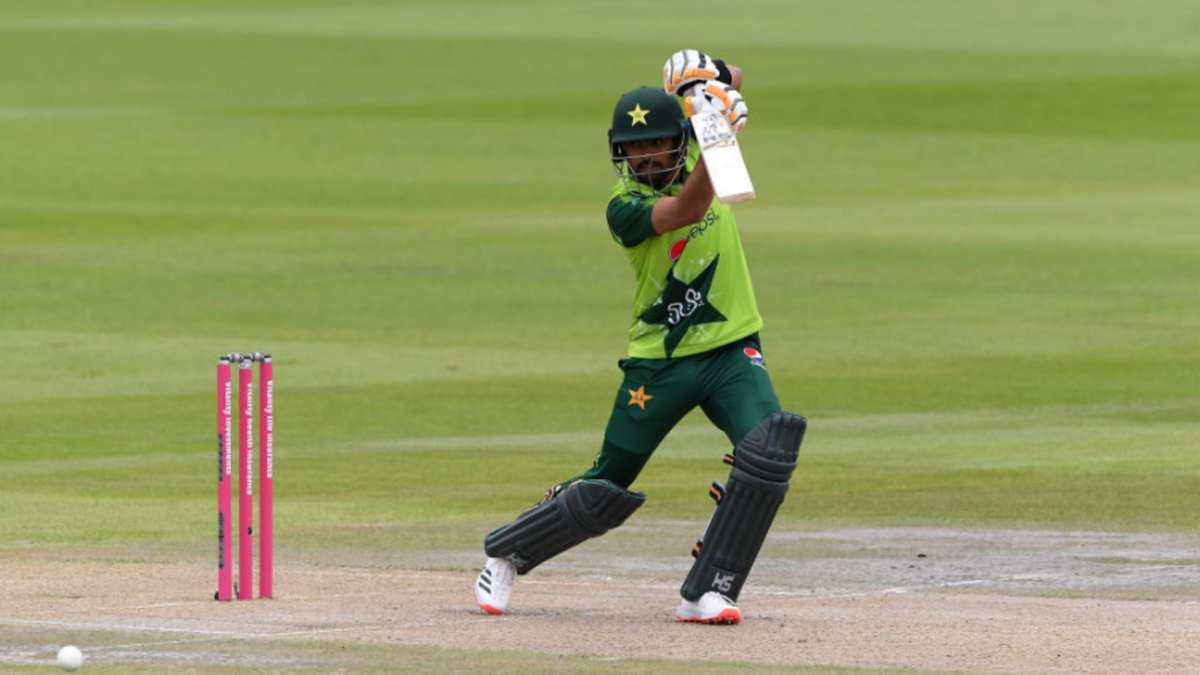
Babar Azam’s form at the top can determine which way Pakistan’s T20 World Cup campaign will swing, writes Divy Tripathi
One of the main talking points from Pakistan’s T20 World Cup squad announcement earlier this month was the absence of both Sharjeel Khan and Fakhar Zaman. While Zaman has made it to the reserves for the tournament, Sharjeel finds himself axed from the set-up altogether.
While Sharjeel’s removal might come as a surprise, given that he opened for Pakistan in their last T20I series against West Indies, other calls with respect to the top-order have been as per expectations. The Pakistan top-order will likely comprise of Mohammad Rizwan, Sohaib Maqsood and Babar Azam. The three have been the highest run-getters in this year’s Pakistan Super League.
But Sohaib Maqsood is a recent selection, who has scored 52 runs at an average of 13 since making his comeback in the green shirt. And while Rizwan is a secure option as an opener, he can take some time to get going. His strike-rate in PSL 2021 took a hit as the season progressed and stood at 127.87 at its end. Still, his move to the top has given exceptional results in the international format for Pakistan (880 runs at a strike-rate of 139), and he can be an asset as someone who can lay a strong platform for Pakistan.
But Pakistan should mainly bank on their best batter, Babar, to get their innings going this T20 World Cup. He has oscillated between the positions of opener and No.3 this year. It’s time he is installed permanently at the top, but also important that he is given the licence and instruction to attack the new ball from the off.
While Babar is someone who’d prefer to bat through the innings, Pakistan will hope that he can continue his rich vein of form and give quick starts to the Pakistan T20 team.
A sample of what he can do on his day was shown this year in Nottingham, when his 85 helped in setting the platform for the Pakistan innings. These runs were also scored at a quick rate of 173.46, ensuring that Pakistan’s run rate was always above eight after the second over.
To some it might seem that Babar and Rizwan play similar kind of roles for their team, given Babar’s strike-rate as an opener in T20Is stands at 136.19, which isn’t too different from Rizwan’s 139. However, it is without a doubt that Babar has been Pakistan’s best batter in recent times.
Whether it be his brilliant hundred at the Gabba on a tour where the rest of the Pakistan batters struggled to make an impact, his slaying of Dale Steyn’s bowling at the Centurion Test in 2018, or his many ODI innings which have contributed to his gargantuan average of 56.92, the Pakistan batter has shown over and over again that he is a once-in-a-generation player.
But his recent form has shown that greater heights remain to be achieved. He scored a blistering 59-ball 122 in a T20I against South Africa in April 2021, achieved his highest ODI score of 158 against England this July and a composed 75 in the Kingston Test against the West Indies.
All the three knocks came against the new ball and were exceptional in their own way. While the Centurion hundred helped Pakistan chase down a total of 204 in merely 18 overs, his knock in Birmingham showed that he could play big knocks in ODIs as well, while his 75 helped fish Pakistan out of a terrible start, wherein at one stage they stood at 2-3 in the series decider.
India’s star batter Virat Kohli was in top form during the World T20s of 2014 and 2016. However, he always came in at one down, and in hindsight, this might have been a mistake on the part of Indian management. For while the role of a sheet anchor is quite important in T20, the likes of Kohli and Babar can also switch gears and up the ante when needed.
Babar is in his prime, and Pakistan seem to have understood that their best batter needs to face the maximum deliveries to deliver his best in the T20 World Cup. They will hope he continues to rise and set the base on which others can flourish in the UAE.








